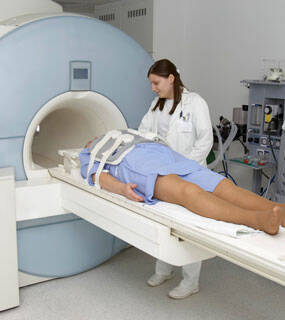Those rising costs are an important reason why the number of uninsured people keeps going up. Businesses find it harder and harder to pay for employee health benefits, and only 61 percent of employers even provide them (from a high of close to 70 percent a decade ago). The employers who do provide benefits are cutting them and forcing employees to pay more in the form of co-payments and deductibles. The 15 percent of Americans who are uninsured are surely faced with both health and financial threats. The cost problem, however, now threatens everyone else as well, including those assisted by Medicare and Medicaid.
Yet even if most people are aware of the dangers of cost escalationand many know it from personal experienceit has not gripped the public imagination, the presidential candidates or the media with the force of the problem of the uninsured (even though recent public opinion polls indicate it is catching up). Candidates and others have proposed a number of detailed plans for universal care, but nothing comparable for cost control. There is a reason for that.
The problem of the uninsured is the popular problem and the problem of cost control the unpopular one. The former is popular because it is easy to empathize with millions of people who cannot get decent care. Cost control, by contrast, is unpopular, or, perhaps more precisely put, it is dodged and evaded as if it were a nasty political virus to be avoided. Consider what serious cost control will require: moving from a 7 percent annual cost growth down to 3 percenta rate of inflation for health care costs that is no greater than the annual rise from general inflation. This amounts to a cost reduction of $1.5 trillion over the next 10 years, settling in at $2.5 trillion in a decade. That would represent an enormous and unprecedented drop in annual costs for a health care system that has never, since World War II, seen anything more than a short and temporary decline from time to time. But this will mean that just about everyone will be forced to give up something, obliged to accept a different, more austere kind of health care.
There are at bottom only three ways to deal with the high cost of health care. One of them is to increase revenues for the system. With government programs such as Medicare, this means raising taxes sharply; with private insurance it means raising premiums. Another approach is to cut benefits drastically, giving people less care. Still another way is to force individuals to pay more out of pocket for their care. Not one of these strategies, if openly embraced, could possibly become popular. They would just be different ways of inflicting pain.
Controlling Medical Technology
The feature of cost escalation that ought to catch our eye most is the role of medical technology. Health care economists estimate that 40 percent to 50 percent of annual cost increases can be traced to new technologies or the intensified use of old ones. That means that control of technology is the most important factor in bringing costs down. Technology also happens to be the most beloved feature of American medicine. Patients expect it; doctors are given extensive training to use it; the medical industries make billions of dollars selling it; and the media love to write about it. The economic and social incentives to develop and make it widely available are powerful, and the disincentives so far are weak and almost useless.
Even among economists and others who concede that technology plays a central role in the cost problem, there is considerable ambivalence about how to deal with it. Technological innovation is as fundamental a feature of American medicine as it is of our industrial sector. After all, innovation has given us vaccines, antibiotics, advanced heart disease care, splendid surgical advances and increasingly effective cancer treatments. And many diseases and crippling medical conditions call for still more innovation. No wonder a distinguished economist from the Brookings Institution, Henry Aaron, who has prominently called attention to all the problems of technology, has written nonetheless that any effort to curb the introduction of new technologies beyond what is required for safety and efficacy would be sheer madness.
If there is ambivalence in many quarters about managing technology costs, there is outright resistance to such attempts among many American physicians and medical industry associations. Those groups were heavily responsible in the 1980s and 1990s for killing two federal agencies designed to assess medical technology from a scientific and economic perspective. Medical groups opposed them on the grounds that studies of that kind could interfere with the doctor-patient relationship (only they can decide about treatment evidence), and that since life is priceless, any economic assessment would be immoral. Congress, which has never shown much enthusiasm for the control of technology costs, did the actual killing. Ever since the advent of Medicare in 1965, Congress has not allowed it to take costs into account in determining which technologies and treatments it will cover. The medical device industry has been blamed for that resistance. Meanwhile, the pharmaceutical industry has blocked price controls on drugs for many decades.
While it will be hard enough to get universal health care in this country, it will be even harder to control costs. The opposition to such control is politically more intransigent; and in the case of technology, the opposition is deeply rooted in American culture, whose obsession with health is not matched in any other society. Comparative public opinion surveys in Europe and the United States indicate a much greater belief in technology in this country. An astonishing 40 percent of Americans believe that medical technology can always save their lives; not nearly as many Europeans share that fantasy. The old line that Americans believe death is just one more disease to be cured is no longer a joke.
Cost-Cutting Ideas
Can anything be done about costs? A number of ideas have been floated about how to meet the challenge, most of them not rooted in any experience or evidence. The longtime favorite has been to eliminate waste and inefficiency, which is like trying to keep dust out of a house located on the edge of a desert. Medical information technology is a more recent candidate, along with increased efforts to advance disease prevention efforts, consumer-directed health care and disease management programs.
Those are all attractive ideas, but they share a common and crippling handicap. In our messy and fragmented mixture of public and private health care, there is no effective leverage, government or otherwise, to put in place good but often painful ideas. Government might manage to act on some of them, but only after a long and difficult fight. The private sector has never shown much capacity to do so; and given its market philosophy, it would surely resist government efforts to impose cost control mechanisms upon it.
Universal care is the only tried and effective way to control costs. The European health care systems do so effectively by means of a strong government hand. They use, among other things, price controls, negotiated physician fees, hospital budgets with limits on expenditures and stringent policies on the adoption and diffusion of new technologies. The net result is that they keep annual cost increases within the range of 3 percent to 4 percent, have better health outcomes than we do and achieve both at significantly less cost. With the exception of the United Kingdom and Italydespite what many American conservatives saythere is little rationing and there are no waiting lists for care.
But that is Europe, and this is America. The methods we are inclined to use here to control costs are generally mild and do not promise anything near the reduction in costs needed. The methods the Europeans use, dependent upon government, work well but are culturally and politically unacceptable here. That is the fundamental dilemma in trying to think through the problem.
Consequences of Cost Control
We need a change in culture, not just in the management of health care. Since many of the effective means of controlling costs will be painful for us because of our fascination with technology, the resistance to change will be formidable. Effective control will force patients to give up treatments they may need, doctors to sacrifice to a considerable extent their ancient tradition of treating patients the way they see fit and industry to reduce its drive for profit. Hardly anyone will want to do such things. Liberals will hate it, because though they favor universal health care, they are also children of the Enlightenment, champions of endless scientific progress and technological innovation. Economic conservatives will despise it as government interference with market freedom and consumer choice. Social conservatives will see the necessary rationing as a form of social euthanasia, killing off the burdensome in the name of cold-hearted economics.
Many commentators argue that if health care is not reformed, our system will collapse. I doubt that will happen. Instead, there is likely to be gradual deterioration, tolerable enough for the affluent but bringing to everyone else a gradual loss of quality, with more people uninsured, more expensive insurance, more bankruptcies and economic pain from medical debts and more economic anxiety about getting sick.
The frustrating part of all this is that in principle, cost control is a problem that can be solved. There is indeed waste and inefficiency, enormous and absurd variation in costs of care from one geographical region to the next, a great deal of useless or only marginally useful treatment, great possibilities in disease prevention programs, far too few primary care physicians and geriatricians and far too many specialists. The fact that the European countries can control costs and limit technologies without harming health is a patent rebuke to our way of doing things.
Looking for Solutions
Can we get there from here? To do so, both a huge economic gap and an equally huge cultural gap must be closed. We have become accustomed to living (and dying) with an expensive and disorganized system that serves many ends other than health. It is a system designed for reckless affluence. It builds upon a model of health and medical progress that is open-ended and infinite in its aspirations. Suffering, aging and death are enemies to be conquered, at whatever the cost to other social needs.
With the help of intensive marketing by industry and daily media hype, we have become fearful hypochondriacs, sensitive to every ache and pain and always anxious about that undiagnosed cancer or heart disease just waiting to get us. Our standard for good health constantly rises. Whatever the state of our health, it is never good enough. However high our life expectancy, we remain forever hopeful for medical miracles and endlessly dissatisfied with our health.
The nation needs a good dialogue on health care reform, but one that moves beyond organizational and management schemes. They are important but no more so than some deeper matters. Should death be seen as the greatest evil, which medicine should seek to combat, or would a good quality of life within a finite life span be a better goal?
Do the elderly need better access to intensive care units and more high-tech medicine to extend their lives, or better long-term and home care and improved economic and social support? Does it make any sense that the healthier we get in this country the more we spend on health care, not less? Should we be spending three times more of our gross domestic product on health care than on education (when 40 years ago it was about the same)?
Those are rhetorical questions. But they are the place to begin any serious discussion about the control of costs and technology. That discussion merits at least as much attention as does the plight of the uninsured; it will be harder to maintain and focus, but it is even more necessary.
Read Daniel Callahans article from 2006 on "Caring for the Elderly."









Has anybody out there ever heard of an HMO (health maintaince organization). I realize that there were a number of problems with some of the start ups back in the 80's. But as a retired biomedical research scientist who currently receives his health care from an HMO, I can tell you that they function quite adequately.
Yes, considerable attention has been paid to research on Comparative Outcomes. The classic is the Dartmouth Study which compared costs and outcomes in numerous regions of the US. The two prototypical areas were a large HMO in Minnesota and typical "Fee for Service" operations in Texas. After controlling for critical variables (socioeconomic status, ethnicity, family life) McAllen TX spent twice as much as Rochester MN and had significantly inferior outcomes. Most of the above commentaries (except for Barb's) impress me as eminating from sociology and polysci depts. Data always carries the day and it generally comes from depts of Preventative Medicine. Come on, hasn't anybody read a good paper lately, the literature is chocked full of papers that indicate that Preventative Medicine and HMO hold the only promise for cost containment. If you don't believe me start calculating the costs for jump grafts in 20 years when the current generation of obese 30 year old hypertensives with Type II Diabetes reaches their 50's.
An emeritus adjunct professor of Immunology and Microbiology at a SE Michigan Medical School.